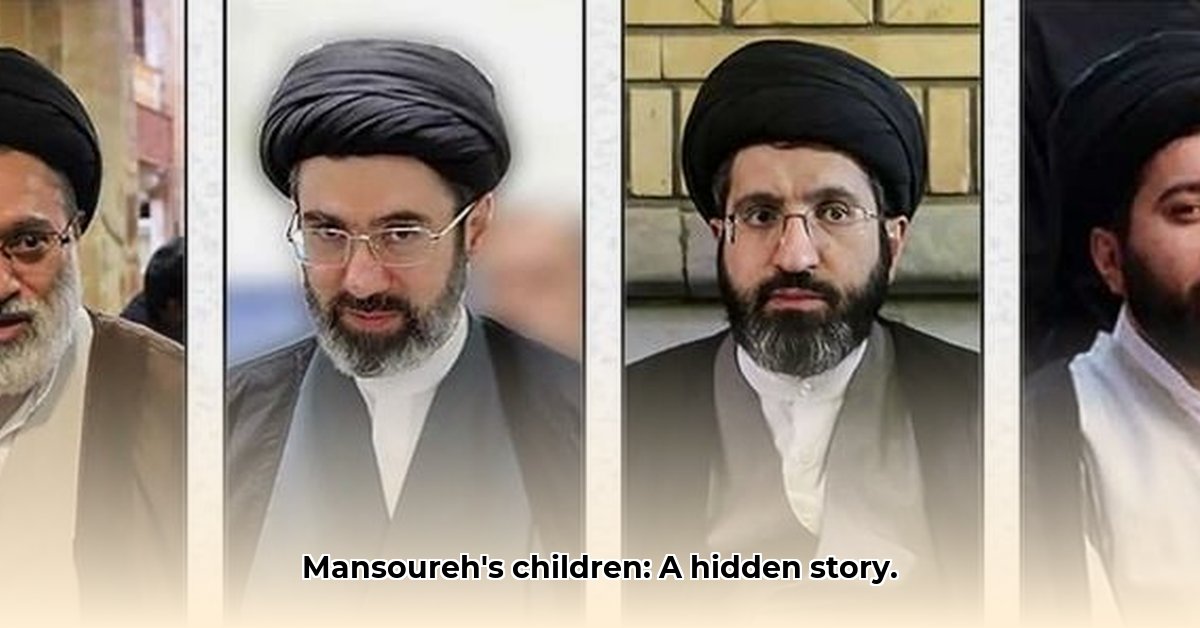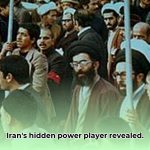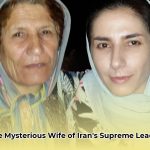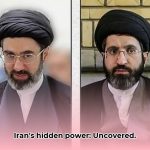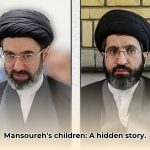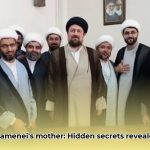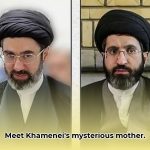Mansoureh Khojasteh Bagherzadeh, wife of Iran’s Supreme Leader Ali Khamenei, remains a figure shrouded in mystery. This article explores the challenges of uncovering information about her life and family, delving into what is known, what remains hidden, and the implications of this secrecy. For more in-depth biographical information, see this detailed profile.
Mansoureh Khojasteh Bagherzadeh: A Life in the Shadows
Mansoureh Khojasteh Bagherzadeh’s life presents a study in contrasts. While her husband wields immense political power, she maintains a remarkably private existence. Confirmed details show she married Ali Khamenei around 1964 and hails from a religious family in Mashhad. Beyond these basic facts, information becomes scarce, raising questions about the reasons behind this deliberate obscurity.
The Walls of Secrecy: Information Control and the Khamenei Family
Why is so little publicly known about Mansoureh Khojasteh Bagherzadeh and her family? The answer lies, in part, within Iran’s political climate. The Supreme Leader’s private life is shielded from public scrutiny, reflecting a broader strategy of information control. This makes obtaining reliable details exceptionally difficult.
What We Know (and Don’t Know): Filling in the Blanks
Available sources confirm that Mansoureh Khojasteh Bagherzadeh has six children. However, definitive details about their names, ages, and especially their occupations, are often conflicting or absent. Identifying photographs are rare. This lack of verifiable information fuels speculation, leaving many questions unanswered.
Most sources name the children as Mostafa, Mojtaba, Masoud, Meysam, Boshra, and Hoda. Mojtaba Khamenei, in particular, has been mentioned in connection with Iranian politics, although specific verified details remain limited.
Interpreting the Silence: Theories and Speculation
The absence of reliable information has led to various theories. Some believe the children lead private lives, deliberately avoiding the public spotlight. Others suggest the secrecy is a security measure, protecting the family from potential threats. Without concrete evidence, these remain speculative.
Iranian Politics and Power Dynamics: A Broader Context
The secrecy surrounding the Supreme Leader’s family reflects a broader cultural and political tradition in Iran that prioritizes privacy and image control. While discretion is common in many countries regarding leaders’ families, the Iranian approach is particularly pronounced. This raises questions about the balance between transparency and the right to privacy.
The Researcher’s Dilemma: Navigating Obstacles
Researchers investigating Iranian political figures face a formidable challenge. Reliable sources are scarce, and online information is often conflicting or fabricated. Separating fact from fiction requires meticulous fact-checking, scrupulous source verification, and a healthy dose of skepticism.
Future Research: Uncovering the Truth
Future research could involve archival investigations and interviews with individuals who may possess firsthand knowledge. Accessing records and verifying information will be difficult, but understanding this family’s lives promises insights into Iranian society and politics.
Ethical Considerations: Privacy vs. Public Interest
The limited information about Mansoureh Khojasteh Bagherzadeh and her children raises ethical questions about transparency in public life. How much personal information about prominent political families should be public? Given the Supreme Leader’s family’s influence, this complex question has no easy answer.
Verifying Information About Mansoureh Khojasteh Bagherzadeh: A Guide
Key points:
- Limited public information exists about Mansoureh Khojasteh Bagherzadeh’s life.
- Discrepancies appear across various sources regarding her birthdate, family details, and other biographical information.
- Verification requires rigorous cross-referencing and source evaluation.
- The political climate in Iran affects information availability and reliability.
The Elusive First Lady: A Research Challenge
Mansoureh Khojasteh Bagherzadeh remains an elusive figure. How can we verify conflicting information about her?
Identifying Misinformation: Navigating Contradictions
Different sources cite conflicting information, including birthdates (1945 vs. 1947), the number of children (ranging from four to six), and even physical characteristics. These discrepancies suggest deliberate obscurity.
A Multifaceted Approach to Verification: Methods
A multi-pronged approach is necessary:
- Triangulation of Sources: Cross-reference information from independent sources.
- Source Evaluation: Analyze the credibility and potential biases of each source, considering motivations.
- Contextual Analysis: Understand the political and social contexts surrounding any information.
- Fact-Checking: Verify dates, locations, and supporting evidence.
- Acknowledging Uncertainty: Accept that some information may remain elusive.
Limits of Public Knowledge: Accepting Constraints
We must acknowledge the limitations of available data and treat all information, especially unsubstantiated claims, with caution.
Family Background and Possible Business Ventures
Key points:
- Limited public information surrounds Mansoureh Khojasteh Bagherzadeh and her family’s lives.
- Her father, Mohammad Esmaeil Khojasteh Bagherzadeh, was reportedly a businessman in Mashhad.
- Her children lead private lives, making detailed accounts difficult.
- Research requires navigating complexities within Iranian politics.
Understanding Political Obscurity
Mansoureh Khojasteh Bagherzadeh’s obscurity raises questions about the intersection of power and privacy in Iran’s political system.
Family Origins and Business Ties
Born in Mashhad, her family had strong religious connections. Her father’s business activities are mentioned, but specifics are lacking. Did these ventures influence her family’s standing?
The Children: Life Beyond the Spotlight
Mansoureh and Ali Khamenei have six children: Mostafa, Mojtaba, Masoud, Meysam, Boshra, and Hoda. Their lives are largely outside the public eye, fueling speculation. Is this deliberate obfuscation, or simply a family valuing its privacy?
Sources suggest some of the sons hold positions of influence, particularly within religious or politically affiliated organizations, but verifiable details remain scarce.
Unanswered Questions and Future Research
Many questions about Mansoureh Khojasteh Bagherzadeh and her family remain unanswered. Further research is needed to shed light on their lives and their role within Iranian society. This will require careful source evaluation and an awareness of the political sensitivities involved.
